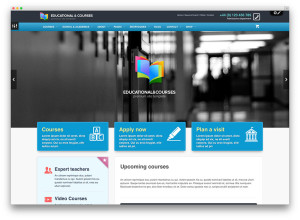At present, India has a total of 700-degree granting universities and 35,539 affiliated colleges (Public or Private). With more than 85% of Indian high school graduates enrolling for a bachelor’s degree, the number of admissions post graduation keeps decreasing. Only 12% of graduate students enrol for a master’s degree while enrolment for doctoral and diploma courses stand at 1%.
Among the number of factors that contribute to the declining rate of admissions, the lack of effective marketing strategies employed by the education sector is one of them.
With the competition being huge among colleges, it is imperative the institutions take measures to diversify their approach to increase admissions every year, which goes to say that institutions must follow a healthy mix of traditional and new age strategies as a part of their marketing guideline.
Here’s a step by step guide to an effective marketing plan that schools and colleges can follow to increase admissions while creating brand awareness.
Identify Your Target
The first step to creating any market plan is to identify who the plan is being created for. Increasing admissions essentially mean selling your institution. Keeping this in mind, who do you think would be your buyers, students being obvious? Should you aim at high schoolers or go beyond? Do parents fall under your marketing purview? Are you looking at non-traditional students? What about a diverse student body?
In India, most parents actively take part in a child’s decision-making activities. They steadily contribute to their academic plans and together, the parents and the child form a strong team that decides the kind of college/university the child should attend. Thus, it pays off to create marketing strategies that appeal to students as well as parents but if you are specifically looking at increasing diversity or maybe the number of graduate students then your campaign should be modelled in a different way. What this means is, strategies should be target oriented to fetch best results and a general appeal should be avoided as much as possible. However, several other factors come into play here. Given the target audience, the campaign can be further personalised by defining the audience. For example, the strategy should consider their demographic, their background, their interests, goals, motivations, et al.
Once the target audience has been identified, it is important to discern where that audience can be easily approached. For example, if it is a student then may be the person would be found in one of the many digital platforms, if a parent, then perhaps a more traditional approach to marketing should be followed, if both, then maybe a healthy mix of traditional and digital.
Most Marketing strategies apart from publicising what the schools have to offer should also act as solution providers, hence, one must know their buyers in and out and only then move forward.
Build Your Digital Presence
A major population of the world today are natives of the digital world spending long hours there. So it goes to say, without a doubt, that a strong digital presence is of utmost importance in order to build a successful marketing strategy. So what are the essentials of the digital world and how can you maximise on them?
Create a Smart and Effective Website
Your website is the virtual front door to your campus. Not only should it be attractive in design, it should be user-friendly, add value to its different visitors like prospective students, parents, alumni, donors, etc, be easy to navigate, provide helpful information and much more.
Keep in mind that your website is the most crucial part of your inbound marketing strategy. Apart from providing content that promotes your brand, it is also the location that captures lead information sourced through various inbound tactics. If websites can be exceptionally designed keeping in mind all the little details that will help route the users easily, then it alone is enough for conversion.
So, how to go about creating a successful website?

- Firstly, you must categorise your visitors. Who is most likely to visit your website apart from students? Maybe a parent researching courses for her child? An education counsellor perhaps?
- Make a list of all their queries and present that information in a guided manner. At all costs, random pop-ups should be avoided as that can disrupt the user’s website journey. Actionable content should be strategically placed (more on that later).
- Make it mobile friendly. Considering, mobile is the most used device for internet browsing, a website should be responsive. The user should not have to pinch in and out of the screen to read website content.
- Use design and font that will resonate with your TG. For example, the University of Maryland in their website’s introduction page uses a typeface similar to the children’s book, “Where the Wild Things Are” which acts as a reminiscent of the childhood years.
- Every institution has a key personality. Make sure that personality is reflected in the website visual. One should try to humanize their website as much as possible. For example, Rhode Island School of Design, whose aim is to inspire budding artists, in their home page showcase their students’ artwork.
Create Engaging Content and Calls to Action
The website content is a major driving force behind website traffic. When crafting content keep in mind your target audience. This is a great opportunity to relate to your buyers and write for them. With most people having short attention span it is important to be concise and clearly define who you are, what your purpose is and especially what differentiates you from other institutions that are out there. It is very effective to place your content through-
- Blog posts– Blog posts are a great way to engage your audience. Provide relatable content and address your target’s queries through easy and interactive language. More frequently you blog about relatable content with proper use of SEO more your institution will appear in organic search results. Make sure your content adds value. Don’t write a blog just for the sake of writing it. For example, if you are planning to promote your college admissions, then a blog post like “10 Essential Admission Guidelines” or “7 Ways to Prepare for an Admission Test” will add value. It is important to note here that the titles of the blog posts reflect their content succinctly. Further, ask your readers to subscribe at the end of a blog post to confirm the leads and move them further in the conversion process.
- Email marketing– Emails can prove to be very useful when nurturing leads. Once you have mapped your buyer’s journey, it is time for you to send emails containing information that will be helpful to them so they can take the next step towards conversion. For example, if your buyer is a prospective student considering enrolment for the coming session, the emails sent to him should contain information like application deadline, relatable courses, course highlights and benefits, fees and financial aids, etc.
- Call to Action– Some of the content used in your website will contain calls to action. CTAs are buttons that urge the users to move ahead in their journey to ultimately become a customer by promoting offers, links and further information. CTAs appear as a button for downloadable content or act as gateways to a landing page. An effective way to use CTA is through blog posts. Let’s say, your university wants to increase the admissions for its summer courses for which you have put out a detailed educational blog post titled “The Ultimate Guide to Summer Courses” which discusses the top summer courses of your university, their highlights and benefits. A CTA, in this case, will appear as a button for your downloadable prospectus. CTAs are important as they help measure a buyer’s degree of interest which further helps in mapping the buyer’s journey through the conversion process.
 Employ Engaging Social Media Strategies
Employ Engaging Social Media Strategies
More than 80% percent of high school students spend a majority of their time online on sites like Facebook, Twitter, Instagram, YouTube, etc. Thus social media is a great place to engage with your prospective students and educate them about your institution through pleasant methods. Sites like Facebook and Twitter make for great places where you can promote your website content and important links. Social media as the name suggests is also the place where you can display the social side to your institution. For example, Keele University decided to generate interest about their university through a simultaneous Facebook and YouTube campaign called #NutsAboutKeele. The university known for the natural beauty of its campus is home to thousands of grey squirrels. They used a video of dancing squirrels on their YouTube page with the hashtag #NutsAboutKeele trending with the video on Facebook encouraging students and faculty members to talk about why they loved the university. The campaign turned out to be immensely successful engaging more 10,000 users across social media sites.
Analyse and Track Your Buyer Movements
With the help of analysis software such as Google Analytics, PPC dashboard, measure your buyers’ movements to further integrate your marketing strategies. Views, click rates, open rates, downloads provide critical information enabling you to track your buyers and nurture them accordingly. It is essential to tie analysis reports to your goals and compare them at the end of every month to draw a clear picture of where your buyers stand in terms of conversion.
However, as important as digital marketing is one cannot rely on it completely to achieve marketing goals. The ease of digital should be tied with the reach of traditional for best results.
In the next post, we will discuss effective traditional marketing strategies that can be combined with digital such that they both can supplement each other.










